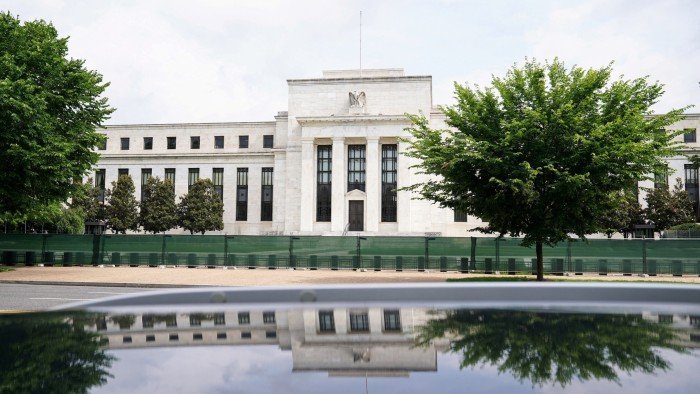Keep up with free updates
Just subscribe to the US financial regulation myFT Digest — sent straight to your inbox.
The Federal Reserve has initiated one of the most significant reductions in US bank capital requirements since the 2008 financial crisis by proposing to allow increased leverage for the largest American banks.
On Wednesday, the US central bank announced its intention to lower the enhanced supplementary leverage ratio for top banks. This regulation mandates that these banks maintain a specific amount of high-quality capital in relation to their total leverage, which encompasses assets like loans and off-balance sheet items such as derivatives. This rule was introduced in 2014 as part of extensive reforms following the financial crisis.
Major banks have long requested that regulators ease the supplementary leverage ratio, arguing that it penalizes them for holding low-risk assets such as US Treasuries and restricts their ability to support trading in the $29 trillion government debt market.
“This adjustment will allow these institutions to enhance the functioning of the Treasury market and engage in other low-risk activities during periods of financial strain,” stated Michelle Bowman, the Fed’s vice-chair for supervision. “Crucially, this modification would not significantly decrease the tier one capital requirements of the largest banks.”
This change is projected to lower capital requirements for the eight major banks by $13 billion, or 1.4 percent, according to the Fed.
The largest systemic US banks, including JPMorgan Chase and Goldman Sachs, must hold tier one capital — consisting of common equity, retained earnings, and other elements that absorb losses first — totaling at least 5 percent of their total assets.
Analysts estimate that the plans presented by the Fed on Wednesday will reduce this to between 3.5 percent and 4.5 percent of these banks’ total assets, aligning it with the requirements of the largest banks in Europe, China, Canada, and Japan.
The Financial Times disclosed in May that US regulators were considering a reduction in the supplementary leverage ratio, as the Trump administration aims to lessen restrictions on the financial sector.
Critics of lowering the supplementary leverage ratio worry that weakening the rule could increase the risk of another banking crash like that of 2008.
In a letter to regulators this week, Elizabeth Warren, the leading Democrat on the Senate banking committee, remarked: “If the banking authorities weaken this requirement, the major banks will accrue more debt, distribute more money to shareholders and executives, and put the whole economy at risk of another financial collapse.”
Some banking executives proposed that the Fed might exclude low-risk assets like Treasuries and central bank deposits from the leverage ratio calculation, as was temporarily done for a year during the COVID-19 pandemic.
Most large US banks are more limited by other regulations, such as the Fed’s stress tests and risk-adjusted capital requirements, which might restrict how much they can benefit from reforms to the SLR. Morgan Stanley analysts suggested that only State Street is genuinely “constrained” by the SLR.
Nonetheless, the leverage ratio often becomes more of a limitation on banks during market stress when deposits increase, restricting their ability to participate in the Treasury markets. After the onset of the pandemic in 2020, some banks, including JPMorgan, reported having to refuse deposits due to leverage ratio constraints.
The Fed is also planning a conference next month to explore broader reforms of US bank regulation. Bowman noted that prospective changes would introduce “many potential enhancements” to what she termed “distorted capital requirements.”


